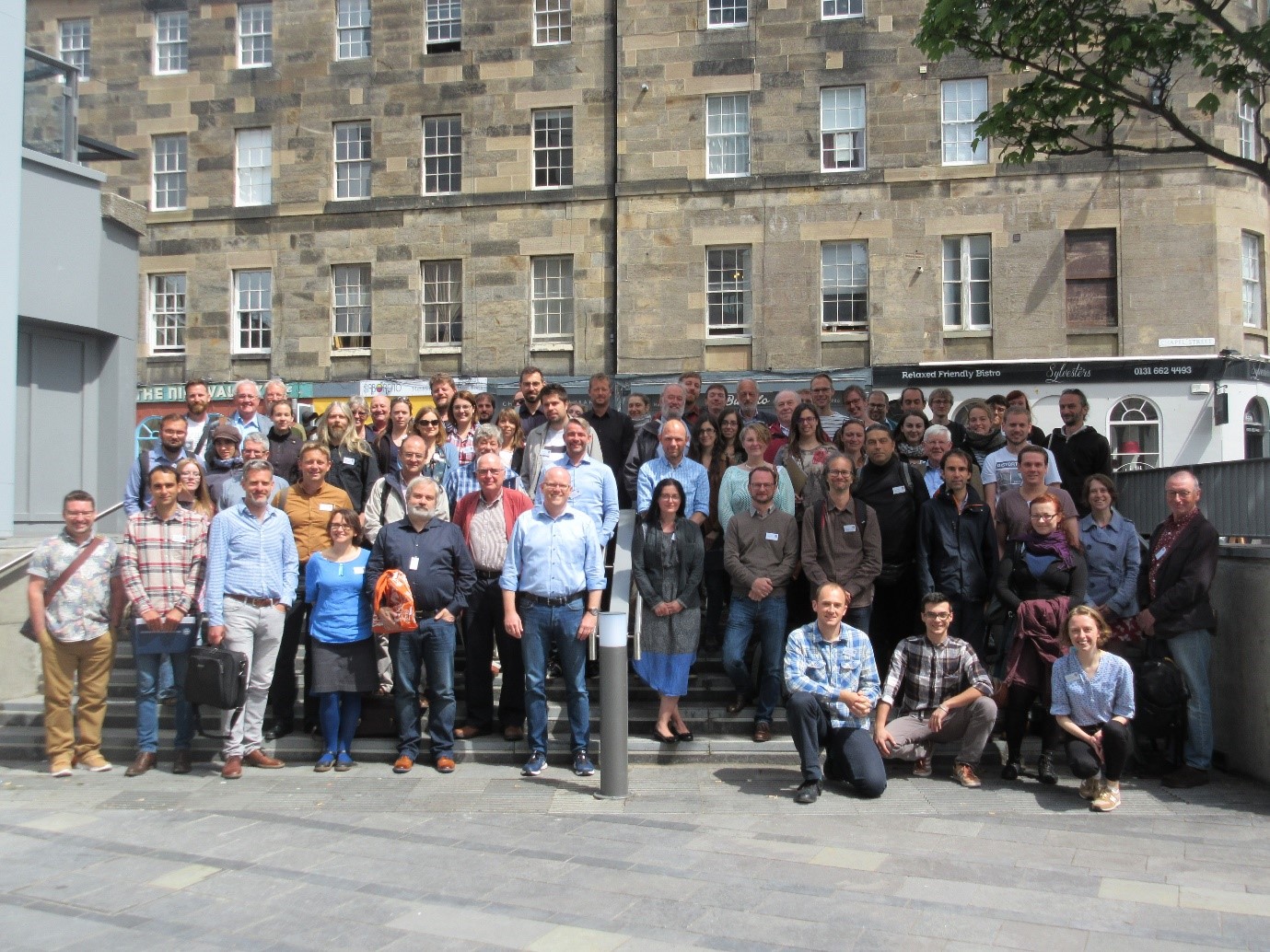The workshop avoided grouping papers by geographic areas, focussing rather on thematic sessions. This acknowledged the variability of evidence across Europe, in unit size and density, distribution and landscape management, but also highlighted similarities – in Iron Age strategies of economic actions and social interactions, and in our modern research methodologies. Combining the northern, western and central European evidence opened up a holistic approach. The longer time frames of the northern Iron Ages allowed long-term developments to be traced.
Territories: Understanding Settlement at Large
The workshop started with the big picture. Moving through time from Late Bronze Age Denmark (M Runge) to Ireland (K Becker), Gaul (A Cony), southeast Scotland (D Cowley), Roman Iron Age Britain (D May), and returning to Late Iron Age Denmark (J Hansen), the session explored the demarcation of settlement zones. This raised questions regarding population densities, and recurrent patterns as well as regional variation, and in the changes to them. These geographically and chronologically diverse examples stimulated discussion on how we detect and interpret social and economic status, and the organisation behind this, at large-scale levels, and how to map this through time.
Status: Social Landscapes
The largest session of the workshop investigated the degree to which architecture and local settlement organisation reflected social structure and hierarchies. Three papers explored rectilinear-enclosed settlements / Viereckschanzen / enclos quadrilatéraux (C von Nicolai; B Danielisova, D Bursák, R Krivanek & R Kozakova; H Wendling) across central Europe; followed by explorations of inter-site relations and settlement networks with similar or different hierarchies and densities (R Karl & K Möller; I Grau-Mira). The relationships between small farms, the grand homesteads of agrarian elites, and oppida were revisited for different periods (S Fichtl; M Fernández-Götz & I Ralston). A number of papers investigated settlement networks in Spain (P Burillo-Cuadrado; D González-Alvarez; L Lopéz-Mondejár), comparing strategies in different landscapes. These also highlighted the social and economic complexities beyond the oppida. The Eastern Hallstatt case study (H Potrebica) showed how shifting focus from burials to settlement remains, even if ephemeral, can greatly expand our knowledge of activities and exchange networks. A Yorkshire case study (P Halkon) explored the way that central places may gain importance without (archaeologically detectable) architecture.
Regions: Changing Settlements
The changing character of settlements over time was investigated in case studies from Poland (P Wroniecki, J Bulas), Hungary (K Tankó), Central Gaul (M Garcia, Y Deberge), southwestern Spain (E Ferrer-Albelda, F García-Fernández, Jose Luis Ramos), Jutland (N A Møller) and northeast Scotland (F Hunter). These demonstrated the importance of new investigations, with different techniques and at a variety of scales, to address new questions. Complex variation between open and enclosed sites and building materials were highlighted by the comparative studies, while striking similarities revealed in the structure and settlement layout in the French case study hinted at collective undertakings or centralized organization. Exploring faunal and macroplant remains, but also craft working and wider contacts, highlighted the benefits of taking a holistic approach to Iron Age settlement.
Architecture: Building Settlements
Focussing in on individual structures within settlements saw discussion of concepts of houses and households from Tyrol (G Tomedi) to the Hungarian Plain (P Kovács), from southeast (A Crone, G Cavers) to northern Scotland (T Romankiewicz), to southwest Germany (A Mecking) and northwest Spain (L Berrocal-Rangel, L Ruano). Seasonal use and settlement mobility were key topics, challenging some traditional models of relatively static settlement systems. The value of ethnographic and ethno-archaeological approaches in addressing these questions was highlighted.
Material Culture: Settlement and Production
Closely connected with the architectural themes were two presentations that considered aspects of material culture (R Labeaune, K M de Vries). Discussion of the role of imports versus on-site production allowed new insight into understanding settlement densities and hierarchies, as did analysing houses as material culture in themselves. Both papers also highlighted the problems of truncation in fertile landscapes that have been in use over millennia.
Methods: Settlement Detection
The final session introduced new methods of settlement detection with a focus on remote sensing and GIS, from Cornwall (J Lewis, C Frieman) to eastern Austria (M Fera, M Doneus), and from the Dacian uplands of Romania (I Oltean) to the southwest of Slovenia (B Laharnar, E Lozić, B Štular). Large-territory approaches and multi-scalar analyses provided comprehensive results in understanding the texture of settlement morphologies across different landscape characters within settlement territories.
Recognizing that dialogue was an important element in exploring the implications of the pan-European coverage, every thematic session concluded with a discussion. This connected the case studies and allowed sharing different views and experiences. It created intensive discussions on common themes, regional variation and the roles of settlements in the stabilisation and destabilisation of Iron Age societies. The oral papers were complemented by 14 posters presented in a dedicated poster session (see
http://www.ed.ac.uk/history-classics-archaeology/news-events/events/events-archive/events-2017/rural-settlement-relating-buildings-landscape-and for further details and abstracts of all papers and posters).
The presented research highlighted how the assimilation of individual buildings and structures into changing landscape textures enhances our interpretations of patterns of land holding, settlement density and permanency, and land use strategies. It questioned, whether we can – or need to – distinguish a “rural” settlement model for prehistoric societies, and should instead approach settlement by considering all its aspects, manifested in built structures and economic, social and cultural practice, from the fence to the farm, from hut to hall, from grain to granary, and from land to landscape.
 Figure: The delegates of the Rural Settlement workshop in Edinburgh, 19-21 June 2017 (photo: Holger Wendling’s camera)
Figure: The delegates of the Rural Settlement workshop in Edinburgh, 19-21 June 2017 (photo: Holger Wendling’s camera)
The workshop was supported by The University of Edinburgh, The Leverhulme Trust, Historic Environment Scotland, National Museums Scotland, AOC Archaeology Group, CFA Archaeology Ltd., GUARD Archaeology, and
Northlight Heritage. The Scottish Archaeological Research Framework (ScARF) sponsored the poster session.
The workshop proceedings will be formally compiled into an edited volume.
Go back to top